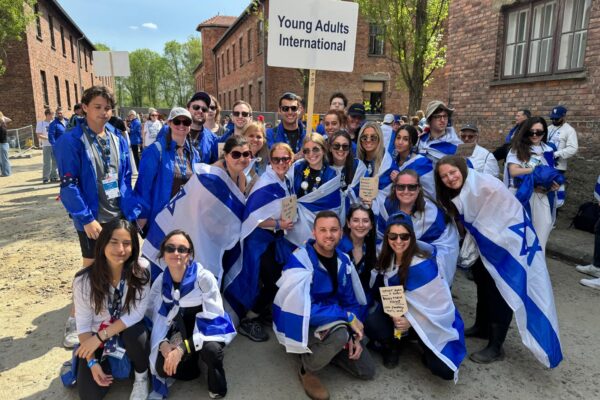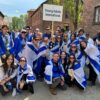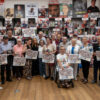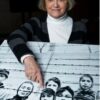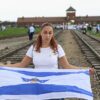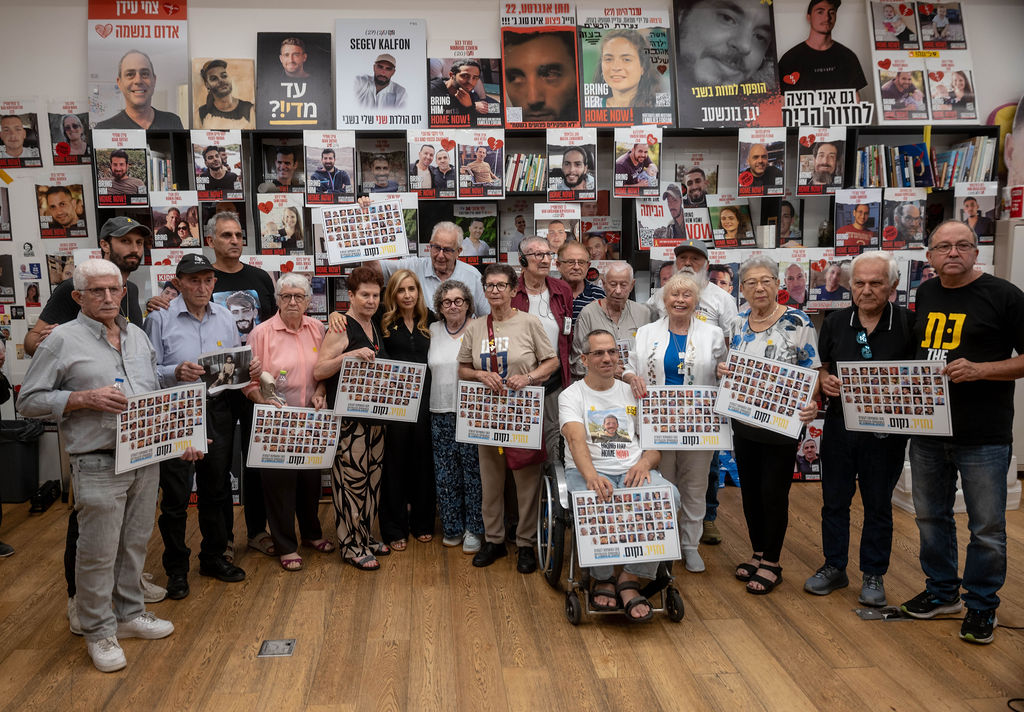
Holocaust survivors, freed Israeli hostages and family members (Chen Schimmel)
When Holocaust survivors and survivors of October 7 walked together at the March of the Living, a bridge was formed between past and present
At this year’s March of the Living, Holocaust survivors walked side by side with survivors of captivity and survivors of the October 7 massacre — a shared march of generations, linking the memory of past horrors with the pain of the present. The encounter between them became a source of strength and resilience for both sides: for the Holocaust survivors, whose life stories have once again become urgently relevant, and for the freed hostages, who saw before them living proof that the heart can heal and life can be rebuilt. This time, the survivors have a new role — to stand beside their younger brothers and sisters on their journey of recovery, offering them the same light and faith that carried them from darkness to life.
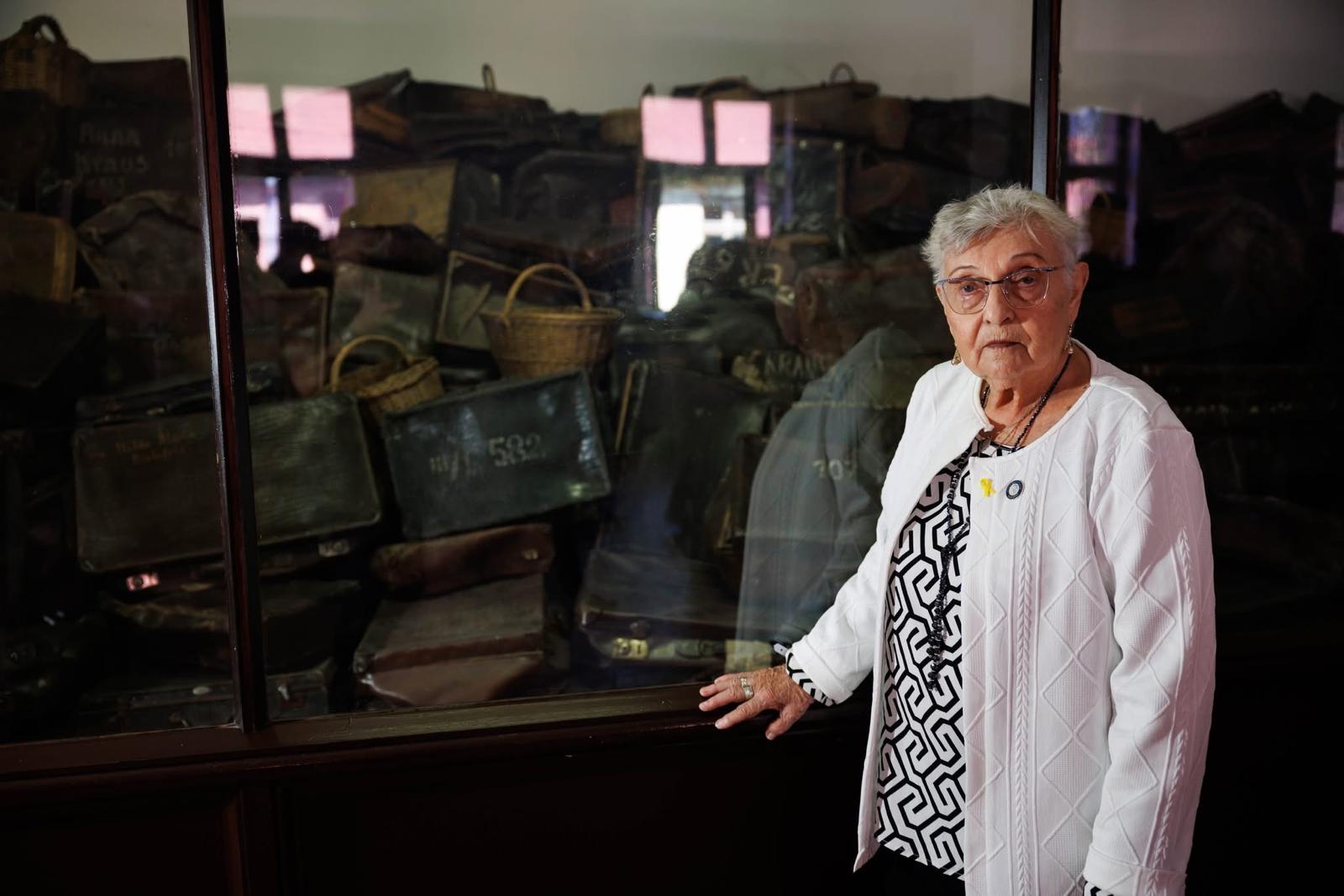
Sara Weinstein (Ziv Koren)
Ninety-year-old Holocaust survivor Sara Weinstein wrote to the freed hostages:
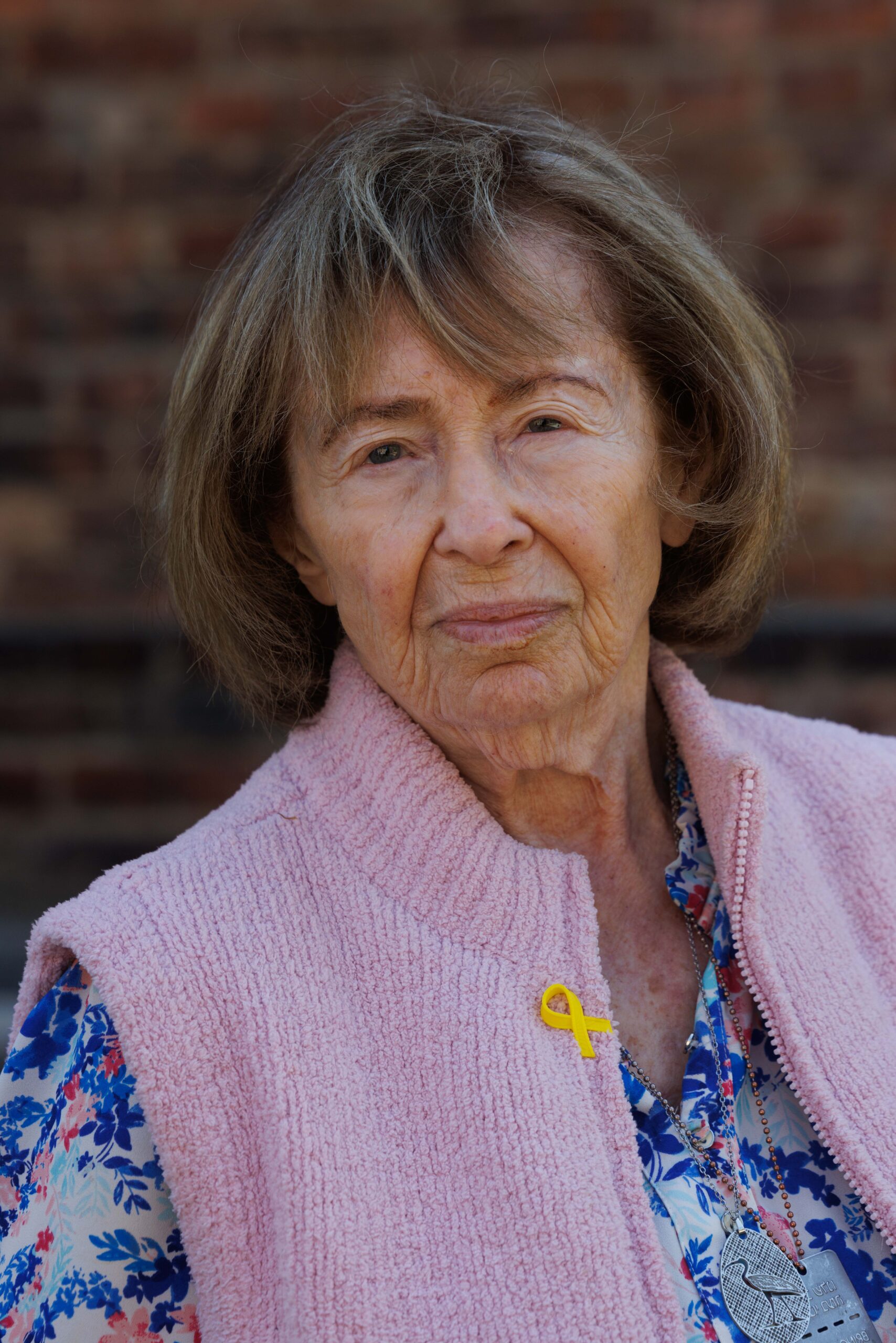
Irene Shashar (Ziv Koren)
“Every breath I take is a prayer for your safety. Your return home will be the redemption of us all. I know that the heart is capable of healing, that the soul is stronger than we can imagine, and that within you lies a power that cannot be broken.”
Her words carry the wisdom of a generation that emerged from ashes with no one to embrace them – no state, no home, no family waiting. Irene Shashar, who as a little child was smuggled out of the Warsaw Ghetto and spent years hiding in closets in Polish homes, recalled:
“When we came out of the darkness – there was no mother or father or brother, nor friends, nor the State of Israel to give us the hug we so yearned for. There was nobody to tell us that they were sorry not to have ended the suffering earlier. Nobody to offer us a bed with a white sheet or make us schnitzel with mashed potatoes.”
Today, those who endured captivity in Gaza are met not with silence but with a nation’s open arms.
“For years we did not relate to our past because the world was not interested — that is a bit of a difference. No one to say: Welcome home.”
That embrace, says Irene, is the great difference between their night and ours — and it must become the beginning of their healing.
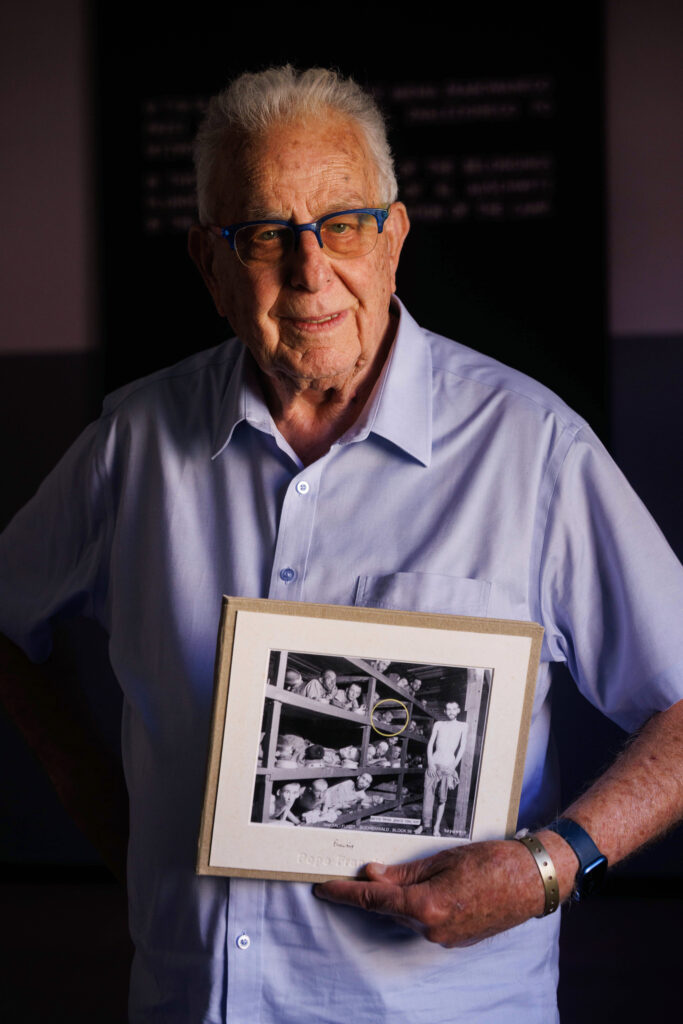
Naftali Furst (Ziv Koren)
From Victims to Survivors
Holocaust survivor Naftali Fürst, who endured Auschwitz-Birkenau and a death march to Buchenwald where he was liberated, also reflected on now and then:
“Until October 7, 2023, when the word ‘survivor’ was heard, it was understood and accepted that it referred to a Holocaust survivor. Now, to our deepest sorrow, we share this definition with remarkable people — heroes — the survivors of the great and incomprehensible failure of the State of Israel, its government, and its army.”
Naftali wrote to the survivors of October 7:
“We, the Holocaust survivors — the embers that endured the great fire — embrace with love, understanding, and deep solidarity our new brothers and sisters. Our hearts are with you. You are the heroes — the stars shining out of the dark and terrible day of October 7, 2023.”
Naftali’s words echo a vital truth: survival is not only about staying alive — it is about choosing life. The freed hostages, too, will now walk this path, redefining themselves not as victims of terror, but as survivors who carry light out of darkness.
Revital Yakin Krakovsky, CEO of March of the Living Israel, added:
“From the survivors of Auschwitz to the survivors of captivity in Gaza, one thread endures: the Jewish spirit cannot be broken. It is this spirit — tested, unyielding, and eternal — that binds the two generations.”
Healing Through Memory and Voice
After the Holocaust, many survivors remained silent, believing the world did not want to hear.
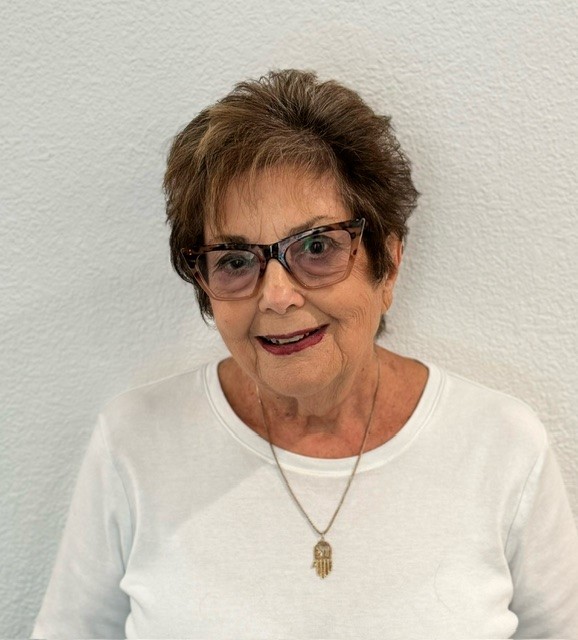
Rosette Goldstein (MOTL)
“After the Holocaust, we were told to stay silent,” said survivor Rosette Goldstein to October 7 victims at the March of the Living. “I am telling you today — don’t stop talking. Speaking is part of healing.”
This message is one of the greatest lessons Holocaust survivors offer to the freed hostages: healing begins with speaking. To name pain is to begin to loosen its hold. To share is to start rebuilding. If it is unmentionable, it is unmanageable, as has been said.
Rebuilding After Ruin
When 80-year-old freed hostage Gadi Moses who marched with us this year returned to his kibbutz, Nir Oz, he said simply: “I will rebuild Nir Oz.”
That sentence echoes the entire postwar generation of survivors who plowed, planted, and built the State of Israel. Their healing came through action — through building new life.
As Revital Yakin Krakovsky said: “What ultimately saved the survivors of the Shoah – in Israel and the Diaspora – was not forgetting, but rebuilding. The survivors who came to the land of Israel after the Shoah threw themselves into the creation of the State of Israel — in education, in agriculture, in factories, and in building communities. They did not have the privilege of doing nothing. Likewise, the survivors who remain the Diaspora rebuilt new lives and families and enriched their communities all over the world in extraordinary ways. Their healing came through action — through building new life.”
The way forward for those returning from captivity is, after recovery, to find meaning again through creation, through love, through community.
The Legacy of Resilience
The survivors’ voices — fragile yet firm — reach across time to remind us that redemption is not a single moment of return, but the daily act of rebuilding faith in humanity and in ourselves.
Their gift to the freed hostages, and to all of us, is the proof that the human soul can mend even after the deepest darkness. The survivors did not teach us how to forget; they taught us how to live beside pain — and still choose life.
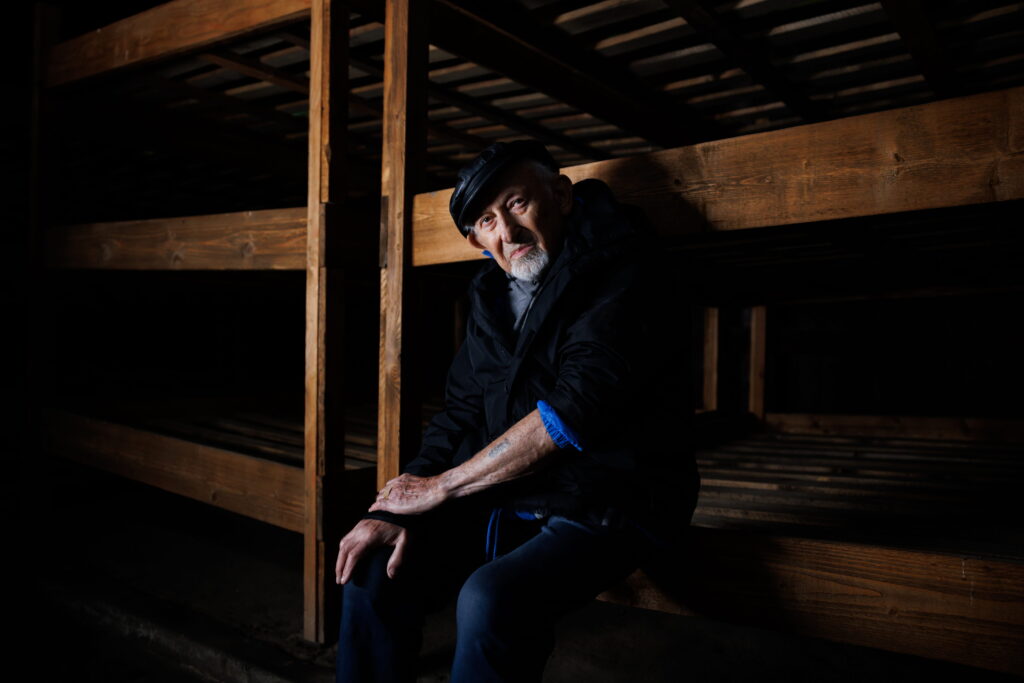
Nate Leipciger (Ziv Koren)
Nate Leipciger, a Canadian Holocaust Survivor who was interned in Auschwitz, and who attended the March of the Living more than 20 times, shared this message with the freed hostages:
“What you suffered was so horrendous – and does not even compare to what we suffered. To me, what you went through is beyond the experiences of a Holocaust survivor. You were confined and chained underground in tunnels for two years, with no air or sunlight, or companionship, watched by guards 24/7. Even in Auschwitz, during the bitter cold or the stifling heat, we were still allowed outside – we were able to breathe the air and sometimes feel the sun. We still had each other and experienced moments where there were no guards surrounding us.
Now that you are free, cherish every moment of your regained family. Remember that there is a tomorrow and that Israel is strong. You are our heroes who have prevailed and persisted in surviving even through the most difficult situations, which are unimaginable to anybody who has not experienced this. Bravo, bravo, bravo to you for having survived. Cherish and enjoy every day. You have a second chance on life. Use it in the most positive way you can.”
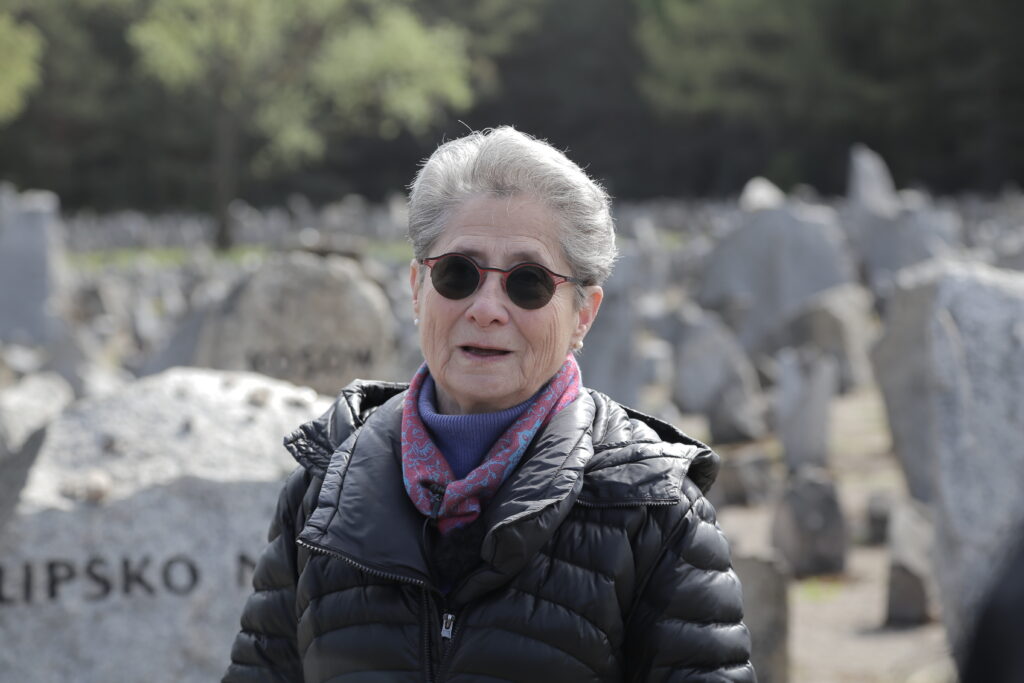
Eva Kuper (USC Shoah Foundation)
Montrealer Eva Kuper, who was hidden from 3 years of age by Franciscan nuns in a Polish orphanage for blind boys during most of WWII, had this message for the former hostages:
“The most helpful approach should be one of gratitude. In many ways, when they were freed, the hostages were born again, they were given a second chance at life. Now they have the rest of their lives in front of them.
They should also have gratitude for their own resilience – that they were able to sustain themselves for the past two years. It’s also amazing to me what they were able to withstand. It’s simply incredible to think of what some of them endured.
Finally, they need to live their lives every day to the fullest. But not only for themselves, but for those that did not survive, by honoring their memory every day.”
